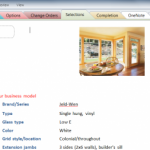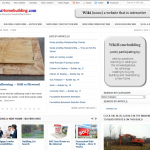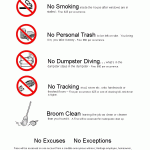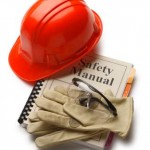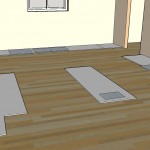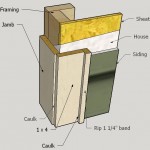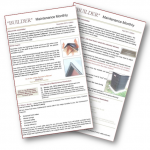Performance Standard: HBR Appendix D Click icon to view book 
Performance Standard: NONE
Homeowner Operation and Maintenance
Mold is a fungus that spreads through the air in microscopic spores. They love moisture and feed on surfaces or dirt. On siding, they look like a layer of dirt. To determine whether you are dealing with mold or dirt, wipe the surface with a cloth or sponge dampened with bleach. If the bleach causes the surface to lose its dark appearance, you are most likely seeing mold.
You can take positive steps to reduce or eliminate the occurrence of mold growth in the home, and thereby minimize any possible adverse effects that may be caused by mold. These steps include the following:
- Before bringing items into the home, check for signs of mold. For example, potted plants (roots and soil), furnishings, or stored clothing and bedding material, to name just a few, could contain mold growth before you bring them home.
- Regular vacuuming and cleaning will help reduce mold levels. Mild bleach solutions and most tile cleaners are effective in eliminating or preventing mold growth.
- Keep the humidity in the home low. Check ridge vents on the roof of your home and keep them clear of snow so they will operate properly. Check other attic vents for and remove any obstructions. Ventilate kitchens and bathrooms by opening the windows, by using exhaust fans, or by running air conditioners and/or dehumidifiers to remove excess moisture in the air, and to facilitate evaporation of water from wet surfaces.
- Promptly clean up spills, condensation and other sources of moisture. Thoroughly dry any wet surfaces or material. Do not let water pool or stand in your home. Promptly replace any materials that cannot be thoroughly dried, such as drywall, or carpet padding.
- Inspect for leaks on a regular basis. Look for discolorations or wet spots. Repair any leaks promptly. Inspect condensation pans (refrigerators and air conditioners) for mold growth. Take notice of musty odors, and any visible signs of mold.
- Should mold develop, thoroughly clean the affected area with a mild solution of bleach. First, test to see if the affected material or surface is color safe. Porous materials with mold, such as fabric, upholstery or carpet should be discarded. Should the mold growth be severe, call on the services of a qualified professional cleaner.
Cleaning mold from your home is your responsibility. Solutions that remove mold are available from local paint or home improvement stores. Wear protective eyewear and rubber gloves for this task; the chemicals that remove mold can be unfriendly to humans.
BUILDER Limited Warranty Guidelines
BUILDER is not responsible for any mold in your home, regardless of its source or cause and regardless of any damages that the home or its occupants may incur. All such damages are referred to as consequential damages in the Limited Warranty. You are urged to review and become familiar with the provisions of the Limited Warranty in the Standards of Performance book.


